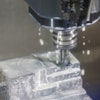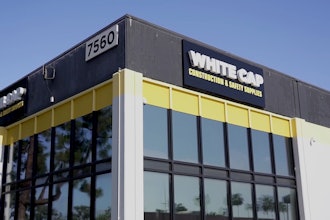WASHINGTON (AP) — U.S. business orders for long-lasting manufactured goods fell for a second straight month in October. While much of the weakness came from a big drop in demand for commercial aircraft, a key category that tracks business investment spending fell by the largest amount since January.
The Commerce Department reported Wednesday that orders for durable goods fell 0.7 percent following a September decline of 1.5 percent. Orders for core capital goods, considered a good proxy for business investment spending, dropped 1.8 percent, the biggest decline since a 4.8 percent fall in January.
Manufacturing has been one of the strongest sectors in the economy in this sub-par recovery, but this sector slowed this year as consumer demand faltered and auto factories had trouble getting parts following the March natural disasters in Japan.
The October drop in core capital goods, non-defense products excluding aircraft, was expected to be a temporary setback. This category has been surging this year, spurred by tax breaks that are allowing companies to write-off their investments all in one year as long as the purchases are made before the end of 2011. That has provoked a rush by companies to take advantage of this tax break which Congress passed in an effort to spur the sluggish economy.
For October, orders for transportation products fell 4.8 percent, reflecting a 16.4 percent drop in demand for commercial planes. Orders for autos showed a solid 6.2 percent increase, reflecting solid sales gains in recent months.
Excluding transportation, durable goods orders posted a 0.7 percent increase. This gain reflected increases in such areas as primary metals such as steel and heavy machinery.
The Institute for Supply Management's manufacturing index grew more slowly in October than September but still remained at a level indicating manufacturing is continuing to expand. Manufacturing, one of the first sectors to start growing after the recession officially ended in June 2009, has posted growth for 27 consecutive months, according to the ISM index.
The overall economy grew at a 2 percent rate in the July-September quarter, the Commerce Department said Tuesday, revising down its initial estimate of 2.5 percent growth. That was still a better performance than the 0.9 percent growth during the first six months of this year, the slowest activity in two years.
The revision in growth reflected even a bigger drop in inventories that initially estimated.
Analysts said that should set the stage for better growth of around 3 percent in the current October-November quarter as companies work to restock depleted shelves. Businesses had been caught by surprise by the stronger demand in the summer and that led to a reduction in their stockpiles.
U.S. automakers reported stronger sales in October, which should give a boost to manufacturing in future months. Sales are now back to the same pace as before the March earthquake in Japan, which had disrupted supplies and left many U.S. dealers with a shortage of popular Japanese models.
The Federal Reserve reported last week that factory production increased by a solid 0.5 percent in October, the fourth straight monthly gain. Overall industrial production, which includes output at utilities and the mining sector, was up 0.7 percent and has risen by 13.4 percent from its recession trough in June 2009. It remains 5.3 percent below its pre-recession peak reached in September 2007.
Factory activity slowed in the spring, reflecting the Japanese supply disruptions and a big spike in energy and food prices, which cut into consumer demand for other items. But in recent months, there have been signs of improving consumer and business demand.


















